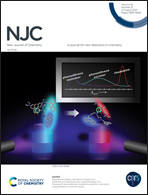Confined alkali metal ions in two-dimensional aluminum phosphate promoted activity for the condensation of lactic acid to 2,3-pentanedione†
Abstract
The sustainable production of 2,3-pentanedione from bio-lactic acid was investigated over alkali metal ion-intercalated laminar aluminum phosphate. The confined alkali metal ion through the adjacent layers of aluminum phosphate offered excellent stability for the condensation of lactic acid to 2,3-pentanedione at least 80 h on stream, remaining constant at 55% conversion of lactic acid as well as around 80% of 2,3-pentanedione selectivity. The intercalated alkali metal ions can efficiently stabilize the enol intermediate, promoting the activity of lactic acid condensation. Besides, it can also prevent the occurrence of a layered stack of aluminum phosphate, providing an excellent mass transfer space for molecular diffusion, which is demonstrated by the calculation of the relation between molecular mean free paths for lactic acid and 2,3-pentanedione and the interlamellar spacing of aluminum phosphate. As a result, the alkali metal ion-intercalated laminar aluminum phosphate exhibited excellent performance for the condensation of lactic acid to 2,3-pentanedione at 270 °C, achieving 90% of lactic acid conversion and 80% of selectivity towards 2,3-pentanedione.



 Please wait while we load your content...
Please wait while we load your content...